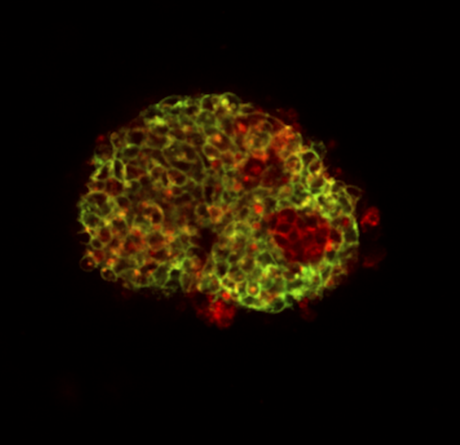Micro-15 (SpaceX-18)
Study of Mammalian Pluripotent Stem Cells in Microgravity
July 2, 2019
The Micro-15 life science research mission, planned for launch on SpaceX-18 in July 2019, will study the effects of spaceflight on the differentiation of mammalian induced pluripotent stem cells (iPSC). From past flight and ground-based experiments, it is known that microgravity influences gene expression, cell proliferation, and differentiation in stem cells. However, it is not clearly understood how microgravity influences these processes. This study will address the knowledge gap by growing iPSCs in microgravity on the International Space Station (ISS).
IPSCs are a type of pluripotent stem cell, which means that they can transform into any other cell type in the body. IPSCs are generated in the lab from adult cells and could potentially be utilized for patient-specific regenerative medical therapies, in which a patient’s own cells are used to generate replacements for cells lost to damage or disease. This technology has not advanced to the level where it can be safely applied to humans so scientists would need to explore iPSCs further before adopting this cell growth technology for human health.
The cell cultures for the Micro-15 experiment will be prepared on the ground and frozen before being launched to the ISS. Once the experiment is ready to begin, the iPSC cultures will be thawed and provided with fresh media to initiate cell growth. After four different growth durations, sets of samples will be treated with 4-Hydroxytamoxifen, a chemical that facilitates production of a fluorescent marker of cell differentiation. At the end of the experiment, the cell cultures will be mixed with preservatives and either frozen or refrigerated to await return to Earth for processing and analysis.
Studying iSPCs in microgravity will advance understanding of how the stem cells differentiate, supporting development of their use in clinical settings. This knowledge could lead to new clinical uses or therapies and better health for both humans on Earth and astronauts on long-duration space explorations.
Payload Technical Monitor: Kevin Martin, NASA Ames Research Center
Mission Scientists: Amy Gresser, Ph.D., FILMSS, NASA Ames Research Center
Fathi Karouia, Ph.D., FILMSS, NASA Ames Research Center
Ruth Siboni, Ph.D, NASA Headquarters
Principal Investigator: Bruce Hammer, Ph.D., University of Minnesota
Co-Investigator: James Dutton, Ph.D., University of Minnesota
Collaborator: Louis Kidder, Ph.D., University of Minnesota
Payload Developer: BioServe Space Technologies
For more information, see the Space Station Research Explorer for the Micro-15 mission.




























